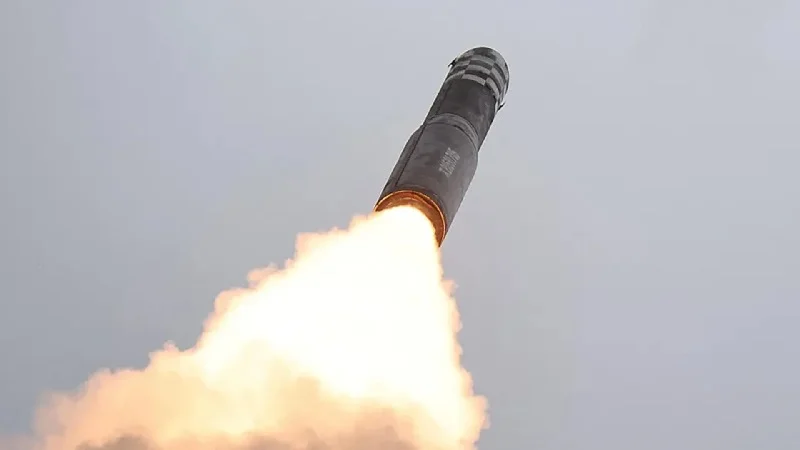N Korea fires banned missile in longest flight yet
Share on:

North Korea has fired an intercontinental ballistic missile, which flew for 86 minutes—the longest flight recorded yet—before falling into waters off its east, South Korea and Japan said.
The ICBM was fired at a sharply raised angle and reached as high as 7,000km (4,350 miles). This means that it would have covered a further distance if it were launched horizontally.
Thursday's launch violated UN curbs and came at a time of deteriorating relations between the two Koreas and Pyongyang's increasingly aggressive rhetoric towards Seoul.
South Korea had also warned on Wednesday that the North was preparing to fire its ICBM close to the US presidential election on November 5.
Seoul's defence ministry said the test was intended to develop weapons that "fire farther and higher."
North Korean leader Kim Jong Un said in a rare same-day report on state media that the launch shows "our will to respond to our enemies" and described it as "appropriate military action."
"I affirm that [North Korea] will never change its line of bolstering up its nuclear forces," Kim said.
The US called Thursday's launch a "flagrant violation of multiple UN Security Council resolutions."
"It only demonstrates that [North Korea] continues to prioritise its unlawful weapons of mass destruction and ballistic missile programs over the well-being of its people," the White House's National Security Council spokesman Sean Savett said in a statement.
South Korea said it would impose fresh sanctions on the North in response to the launch.
UN Secretary-General Antonio Guterres also condemned the launch, which he said were "clear violations of relevant Security Council resolutions," according to his spokesperson.
Earlier, neighbouring China noted it was "concerned."
Pyongyang last fired an ICBM in December 2023, in defiance of long-standing and crippling UN sanctions. That missile travelled for 73 minutes and covered about 1,000km.
North Korea experts believe the launch was aimed at increasing its missiles' payload.
Pyongyang has been developing missiles that can "hit the US mainland even if it carries a larger and heavier warhead" or even multiple warheads, said Kim Dong-yup, an assistant professor at the University of North Korean Studies.
Neighbouring Japan said it monitored Thursday's launch.
South Korean and US officials met after the launch and agreed to "take strong and varied response measures," the South's military said in a statement.
"Our military maintains full readiness as we closely share North Korean ballistic information with US and Japanese authorities," it added.
Thursday's launch comes after South Korea and the US accused North Korea of sending troops to Russia to support Vladimir Putin's war in Ukraine.
The Pentagon estimates that around 10,000 North Korean soldiers have been deployed to train in eastern Russia. A "small number" has been sent to Kursk in Russia's west, with several thousand more on their way, the US said earlier this week.
The alleged presence of North Korean troops in Russia has added to growing concerns over deepening ties between Putin and Kim.
Pyongyang and Moscow have neither confirmed nor denied these allegations.
Source: BBC

